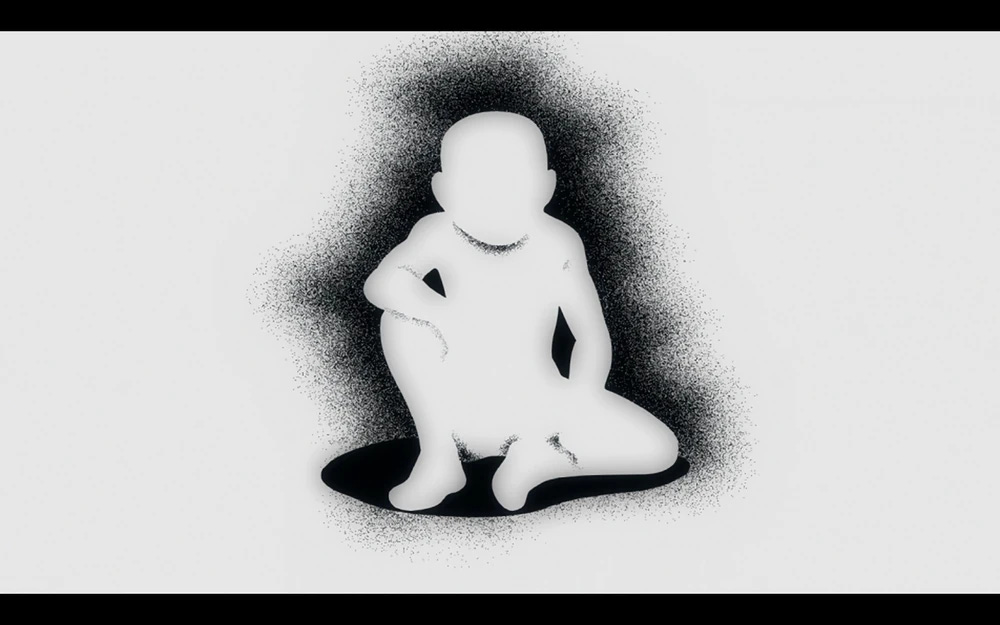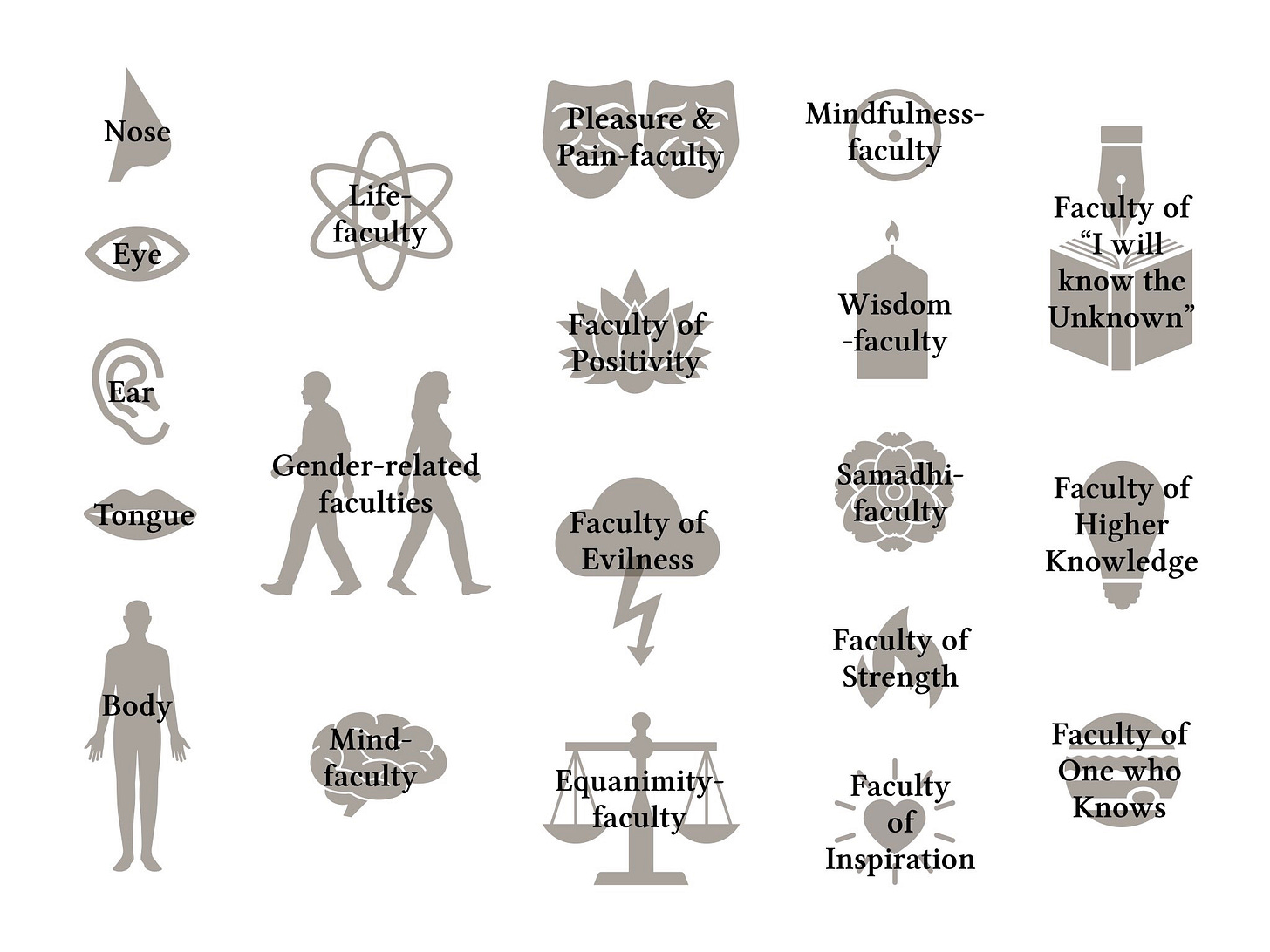Threads of the Infinite: Rudolf Steiner, Theosophy, and the Search for God
Threads of the Infinite explores Rudolf Steiner's expanded view of the human senses and spirituality by bringing together insights from Judaism, Islam, H.P. Lovecraft, and Buddhism. Yeah, it's a doozy
Tuesday 4th March
Rudolf Steiner, founder of the biodynamic movement and anthroposophy, considered there to be twelve human senses—going beyond the five commonly recognised but still fewer than the twenty-two acknowledged in ancient India. He described these as: Touch, Life, Movement, and Balance, which relate to bodily awareness; Smell, Taste, Sight, and Warmth, which perceive the external world; and Hearing, Speech, Thought, and the Sense of the ‘I’, which allow us to connect with others on a deeper cognitive and spiritual level. Engaging all these senses is essential to human development, yet in today’s screen-dominated world, it is more important than ever to ensure we actively nurture them—in our daily lives and in education.
—Tetragrammaton
The Indriya (22):

Previously, we explored how just refining one or two senses (e.g. smell and taste) can transform raw experiences into expressed, living realities. This naturally begs the question: What if we learned to articulate all twenty-two senses? Could we then become even more in-tune with the world around us?
The Indriya (literally meaning, ‘Belonging to Indra’1 in Sanskrit) in this contexts refers to Buddhism’s “22 Phenomenological Faculties”:
Religion, art, and culture have each tried to encapsulate and illustrate “Truth” in distinct ways. In-fact, I recently learned of the German Concept of a Gesamtkunstwerk2, which is an all-encompassing work of art.
By utilizing as many art-forms as possible within its completion, the Gesamtkunstwerk can be seen as a culmination, and synthesis of ideas both old and new—an articulation of artistic faculties, if you will. However, if we step-away from viewing God through the artistic lens, then we find ourselves staring into the infinite.
Thankfully, The Universe [God/Truth] is merciful, and finds ways to manifest itself into our reality through ways that we might perceive, and understand. While I will not claim that this is the right way3, the Kabbalah’s Sefirot provides a neat framework that allows us to have a better understanding of God.
The Concealed, And the Revealed:
For those of you unsure of what I mean by this, I recommend watching this video:
The synopsis of Kabbalah teaches that God is of two parts:
The Concealed (Ein Sof), which is God as an essence. If I ever refer to ‘The Universe’, it is of this form of God that I am referring to. As God at it’s highest [Truth] is transcendent, and unknowable.
The Revealed, which is how the unknowable manifests itself within our reality. The Kabbalah organizes these into the Sefirot4.
Islam offers a similar perspective: Allah (SWT, ﷺ) is described not as an anthropomorphized figure, but rather as an ever-present force, beyond human understanding. The ‘Concealed’ manifests itself through Al Asma ul Husna, (the 99 Names of Allah) all of which fall into either The Concealed or Revealed aspects of being.
H.P. Lovecraft—Despite his controversies (to which, there are many..5), managed to perfectly encapsulate the detachment and madness one risks by chasing the Concealed, Absolute, [Yet] Unknowable Truth of the Ein Sof.
However, as opposed to chasing the positive of the unknown (Taking a leap of faith into God), Lovecraft’s work instead focused on the polar-opposite—a darker take on man’s fear of the unknown. Curiously, it’s possible that Lovecraft even referenced the Kabbalah in his work through the entity of Yog-Sothoth:
Great globes of light massing toward the opening, and not alone these, but the breaking apart of the nearest globes, and the protoplasmic flesh that flowed blackly outward to join together and form that eldritch, hideous horror from outer space, that spawn of the blankness of primal time, that tentacled amorphous monster which was the lurker at the threshold, whose mask was as a congeries of iridescent globes, the noxious Yog-Sothoth, who froths as primal slime in nuclear chaos forever beyond the nethermost outposts of space and time!
From this description, it’s suggested that the appearance (and ideaology) of Yog-Sothoth was pulled from the Qlippoth—which could be seen as the anti-thesis of the Sefirot. Where the Sefirot are the holy manifestations of The Concealed, the Qlippoth are the representation of evil or impure spiritual forces6.
In Lovecraft’s work, the characters minds unravel the moment they glimpse beyond the veil and see into the infinite—the concealed—the unknown. This pursuit of what should not, and can not be known remains an undeniable part of our human experience; as reflected by the concept of Theology as a whole. We cannot help but make sense of the world around us through science—or religion7.
Discourse of Truth:
As a result of the former, the discourse of Truth becomes a spiritual and intellectual struggle; in both the individual, and the collective. We cannot help but oscillate between our lived reality—and the realities we create or co-create through the black mirror8, which more often-than not is a reflection of our inner-self, as much as it is our outer-self.
Spiritually, we often spend too much time adjudicating what is true—both on internet forums, and in real-life. During this time, which we argue our truths, we could instead be looking for the truth within one-another.
Since our lived experiences vary, but culminate into individual truths we find that an array of independent realities CAN co-exist. Unfortunately in this arena of varied beliefs, Truth often becomes ‘subjective’ due to the dichotomy9 of our worldviews and perspectives.
But perhaps, while our individual paths to Truth may differ, they indeed share a thread of commonality. (At least, Rudolf Steiner—and those of Baháʼí Faith believe so.)
To simplify this thought, let me entertain you with yet another metaphor.
Imagine our individual, separate lives to be different editions of the exact same book. The beginning, and the ending do not change in these books, but the details and footnotes that exist between point A (the beginning) and point B (the end) may vary significantly.
Rudolf Steiner, Buddha,Christ and the Unsurprising—Split from Theosophy:
Now let us circle back to Rudolf Steiner. Prior to founding the Anthroposophical Society, Rudolf Steiner was a former member of the Theosophical Society. However, tensions between Steiner and the Theosophical Society arose when fellow member Charles Leadbeater introduced the “World Teacher” Project, which sought to designate a vessel for Maitreya10.
Disagreeing with this idea—and its assignment to a young Jiddu Krishnamurti11, Steiner and a large portion of the German Sect of the Theosophical society split to form the Anthroposophical Society.
Despite his work in both Theosophy and Anthroposophy, Steiner held Jesus Christ as the center to many of his beliefs. He believed Christ was not unique to the Christian Faith, but instead was a universal force—a strand of commonality across varied paths to Truth.
To be a Christian, in Steiner’s eyes meant striving to balance polarizing extremes—to manifest love in the freedom [of choice].
Examples of Steiner’s Christ-driven beliefs include:
Christ is universally central and known by different names across various religions12
All religions hold validity and truth within their unique historical and cultural context(s).
Traditional forms of Christianity must evolve to meet humanity’s ongoing spiritual development.13
Steiner’s view of Christ and Human Evolution:
It’s Steiner’s understanding of a balance of polarizing extremes that allows for a segue into the concept of memeχ’s oscillations.
An oscillation in simple terms is a regular movement between two points, or extremes; akin to a pendulum. When applied culturally, philosophically, and/or spiritually, oscillations represent repeated shifts in behaviors, ideas, and cultural zeitgeists; both individually, and collectively.
In this, each rising generation inherits patterns and behaviors from previous generations. As opposed to being a passive effect, each generation actively reacts, reshapes, and reinterprets what they’ve received—creating an oscillation between past influences & future innovations.
In this same way, Steiner sought for Spiritual Science to be the oscillation between Christianity, and the greater extension of religions, with Christ as a focus14:
Roughly translated to: Total work of art.
Because who am I, to dictate what is right and what is wrong for you?
Which I then used as a reference to organize Rick Rubin’s blog; Tetragrammaton, via my own website: https://tetragrammaton.wiki/
This initially confused me.. As I questioned why God would create something imperfect. This led me down another rabbit hole regarding a book I read called ‘Lucifer’s Legacy’ that spoke on the impact of the Big Bang and the lack of anti-matter in the universe. Long story short, there’s an article I need to write about the concept of the Big Bang and how it directly connects to the lore presented in Kabbalistic texts.
At the end of the day, what’s the difference? [rhetorical]
For the sake of clarity, this Maitreya is “same, same—but different,” from the Maitreya that’s referenced in Buddhism. Theosophy took the idea of the Maitreya and applied it in their own context.
He’s getting his own article. He also casually co-founded a school with Aldous Huxley—you know, the writer of ‘Brave New World’?
This makes John 14:6 hit a little differently: Jesus answered, “I am the way and the truth and the life. No one comes to the Father except through me.
This is the only one I’m kind of iffy about, however further reading into that specific bullet-point would ease my unknowing.
Steiner believed in the second-coming of Christ to be that of a spiritual nature—where the Zeitgeist was to be Christ-like.








